I’m not going to lie.
I wasn’t the most organized person in the world, once upon a time.
There are people out there who come home from a camping trip with all their stuff as neatly packed and organized as it was when they set off.
I used to think they were aliens.
On the other hand, by the end of a trip, my gear would look more like an overflowing laundry heap that was struck by an atomic bomb.
But, after a long, long, LONG time, I finally got my act together and started making an effort to stay organized. I don’t want to brag, but I’ve actually managed to improve to the point where now I’m the one people are asking for camping storage ideas!
Want to find out what they are? Here we go:
Pre-Trip Prep & Planning
The key to staying organized throughout your camping trip is getting all the necessary preparation taken care of before you set off.
Once you arrive at your campsite, all you’ve got to work with is what you’ve brought along. So, do a good job at planning everything out and reap the rewards throughout your trip.
Here are some camping hacks that’ll make getting organized a walk in the park, even on the most hectic family camping trips.
#1 Stick to the necessities
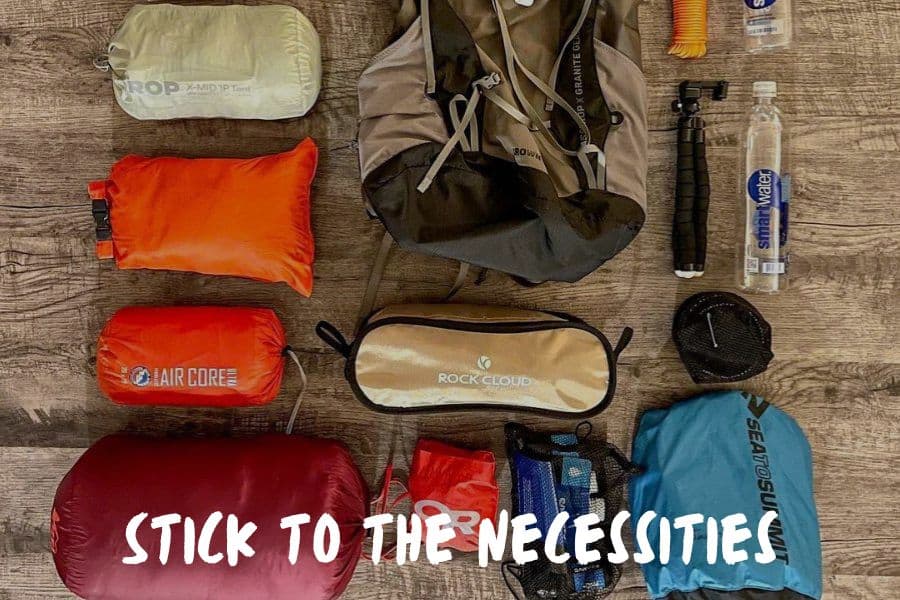
I can’t stress this point enough.
I can’t tell you how many times I’ve returned home from a camping trip realizing I didn’t actually need a lot of the stuff I had packed. All this does is take up extra space and cause chaos.
The more stuff you have, the more difficult it is to stay organized.
So, keep it simple. Stick to the essentials and only take what you really need.
#2 Make a checklist
So, how do you make sure you don’t overpack?
A good way to avoid getting carried away when you start packing is to make a checklist beforehand.
Sit down and make a list of all the things you’ll need for your trip. That way, when you start packing you already know exactly what you need and what you don’t.
#3 Use plastic containers
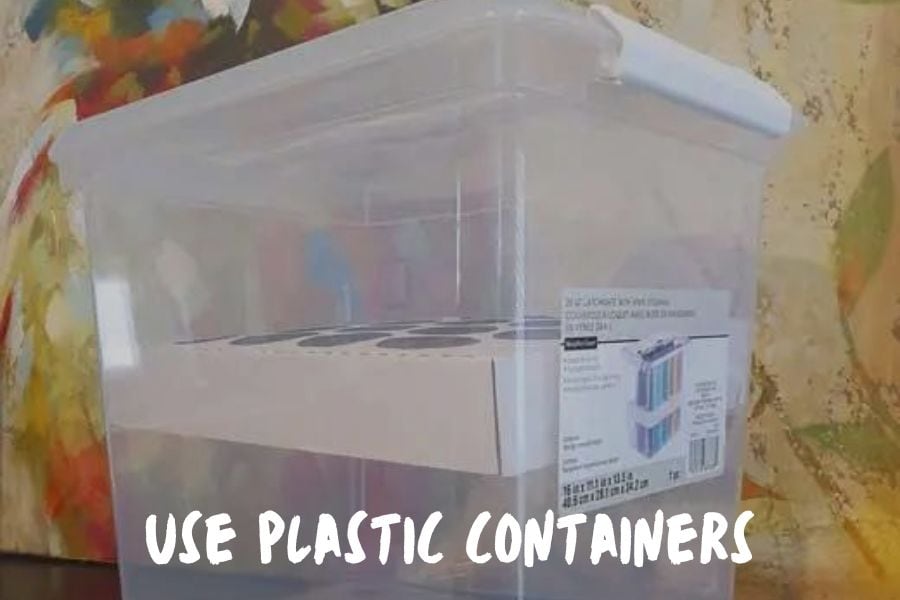
Plastic storage bins (preferably transparent) are an amazing camping storage solution. Whether it’s general camping supplies or camping food storage, a plastic bin is a great place to keep it.
Use large containers to separate your stuff into categories. You might have one storage container for your kitchen gear, another for camping items like your tent and tent poles, a third for food etc. Example storage categories:
- Dry Food
- Kitchen Gear
- Tent Gear (Lighting, Tent Stakes, Tent Seam Sealer, Repair Kits, Tools, Batteries, First Aid, etc.)
- Campfire Gear (Hatchet, Gloves, Camping Shovel, Fire Starter, Matches, etc.)
Smaller containers are also great for keeping smaller items sorted, such as spices, condiments and cutlery.
#4 Color code your gear
If you’ve got multiple bags or containers that are the same or very similar, it’s a good idea to color code them.
Having to open up every container one by one every time you want to find something can get really annoying.
This all becomes much easier if you know that the food is in the container with the yellow tag and the kitchenware is in the container with the blue tag.
You can even take this to the next level by making your own vinyl labels or ordering them on etsy.
#5 Plan your meals
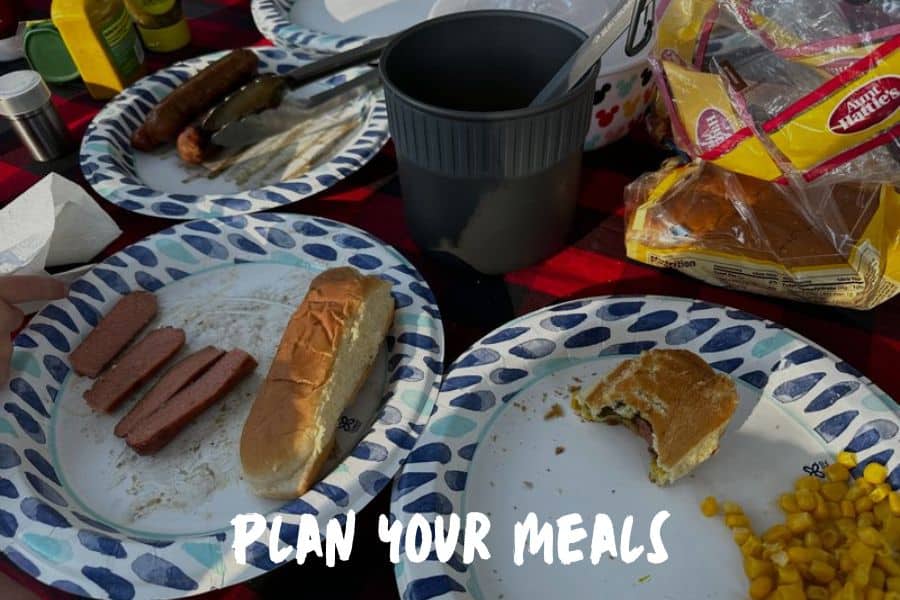
Take the time to figure out what you’ll be having for breakfast, lunch and dinner every day. That way, you won’t end up taking more food than you need.
It’s also a good idea to have a couple of backup options, in case you get back from a day of hiking too exhausted to put together the fancy feast you had planned.
Things like instant mac and cheese are great to have on hand for these situations.
#6 Take what you need to set up a camp kitchen
Setting up a makeshift kitchen at your campsite will make a world of difference in helping you stay organized.
Aside from giving you a nice, sturdy surface to prepare food on, it’ll make washing up a breeze. You’ll be able to wash your dishes as soon as you’ve finished using them, and wash your hands whenever you need to.
You can get really fancy here if you want to and set up a full DIY camp kitchen. If you want to go for a more simple solution though, all you really need is the following:
- a table
- a 5-gallon water jug or source of running water
- a camping stove and a campfire cookware kit
- a large plastic tub for your grey water
- two camping coolers – one for drinks and another for food.
#7 Pack rope
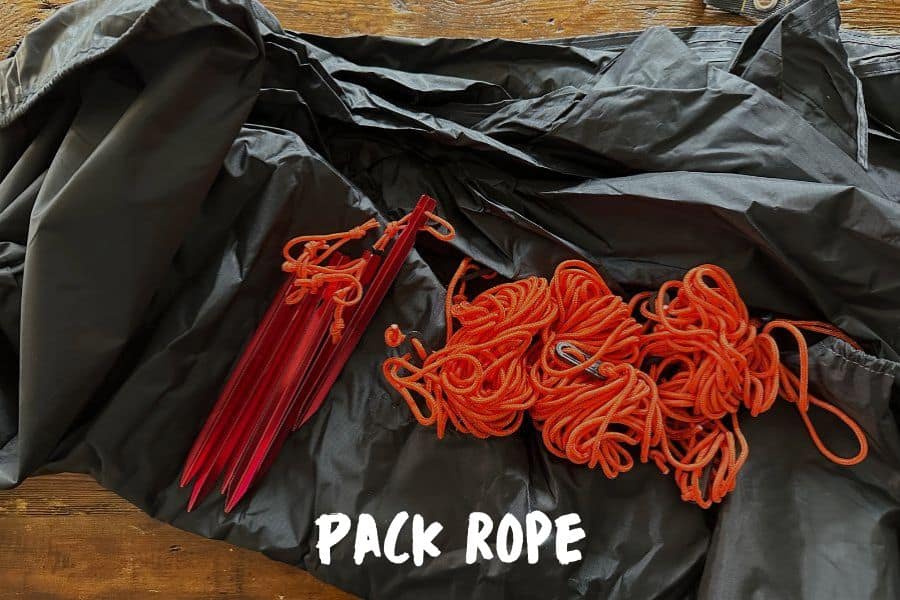
Chances are, you’ve probably already got some rope packed for your camping trip. If you haven’t, you really should. When it comes to the great outdoors, a good rope is like a Swiss army knife – useful in so many different ways.
You can use it as a clothesline, which is a great thing to have at your campsite. Aside from drying your clothes, you can use it to hang up anything you want to keep off the ground.
If at some point in your trip you realize you could’ve done a better job at organizing your stuff while packing, rope will come to the rescue. For instance, if you didn’t pack your kitchen utensils in a container, you can use rope to tie them together and avoid losing anything.
#8 Pack carabiners
Same as with the rope. If you haven’t got any, get some!
Carabiners are also great for keeping a range of loose items together.
Plus, you can use them to hang up anything you want off the ground, or hang things you need on hand off your belt or backpack.
#9 If you’ve got a hanging shoe rack, take it along
You might try to stay organized by constantly packing things you’re not using away, and taking them back out when you need them again.
I’m here to tell you there’s an easier way!
Hang a shoe organizer up on the clothesline to store any items you’ll be using more frequently.
This is a great way to keep your campsite area tidy and minimize rummaging through your bags and containers.
These racks usually fold up to a small size, which makes them super convenient to pack.
#10 Consider bears when packing
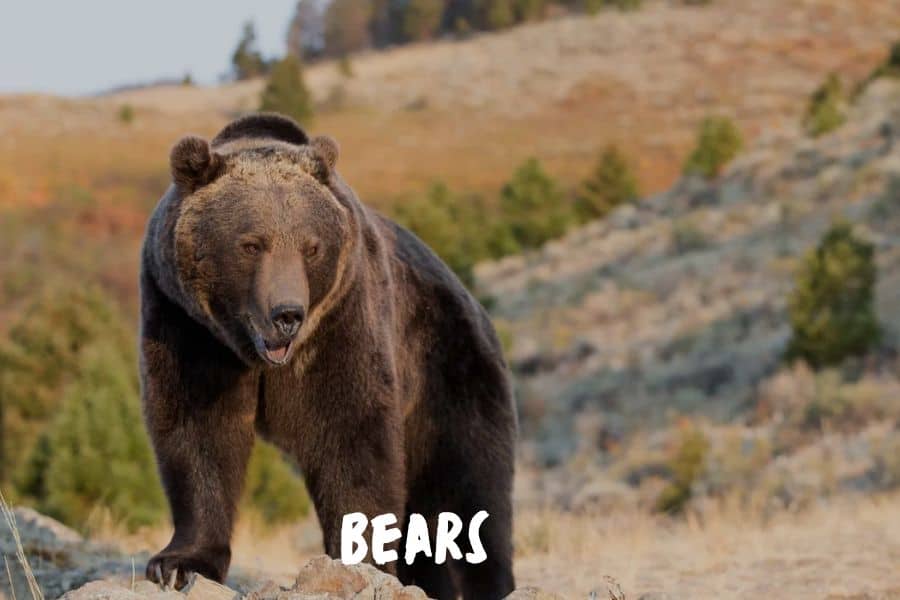
Other than generally making your life easier, staying organized can also be important for safety reasons.
If you’re venturing out into an area where there are bears, you’ll need to make sure you’ve got all the necessary gear.
This includes odor-proof plastic bags and a bear canister.
That being said, you won’t be a very happy camper if you end up having to keep everything in a bear canister.
That’s why it’s a good idea to keep everything that has a scent packed together. This includes food, toiletries and anything else you can smell. If you pack things that don’t have an odor together with things that do, everything in that bag or container will absorb the smell. This could attract bears, as they have an incredible sense of smell.
#11 Make use of empty coffee cans
Coffee cans are a great storage hack for camping trips.
They’re lightweight, water resistant and absolutely free, making them a great storage solution if you’re camping on a budget.
They’re the perfect size for a roll of toilet paper, but they’re also great for storing spices, pancake mix, teabags and anything else you want to keep dry.
#12 Have a plan for trash
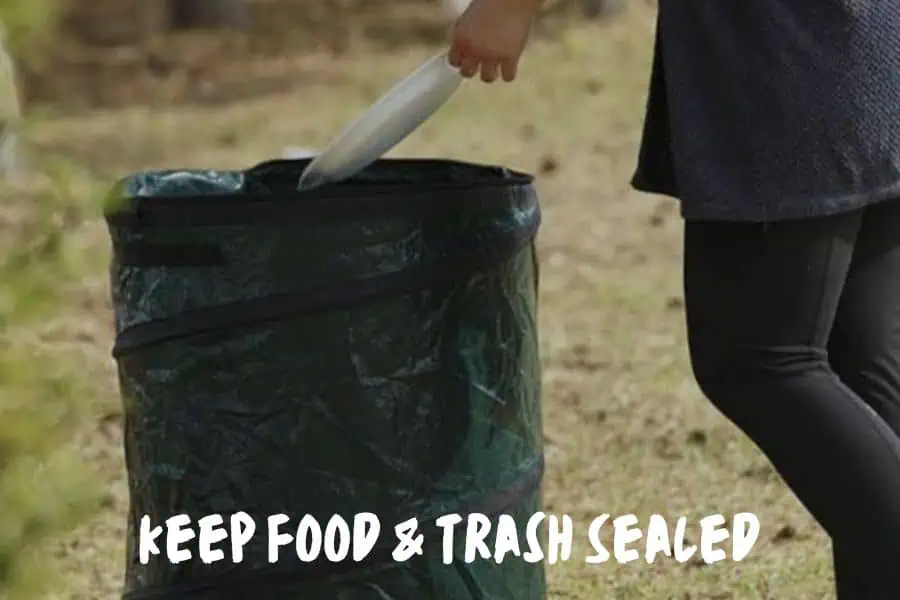
Make sure you’ve got a plan when it comes to storing trash.
Ideally, you should take a designated container along for trash that can be closed tightly to keep odors at bay.
You can also buy a pop up trash can specifically designed for camping.
These are relatively cheap and they fold flat, making them super convenient to pack if you’re short on storage space.
#13 Pack clothes with lots of pockets
There are certain items I always like to keep on my person when I’m out in nature, to make sure I’m ready for anything that can happen.
This includes a pocket knife, a compass, bear spray, a whistle, and some basic first aid supplies.
That’s why when I go camping, I like to wear clothing that has plenty of pockets.
Army pants are great, for example, because the pockets are large and secure. A fanny pack is or a day pack also a must for any camping trip, if you ask me.
#14 When nature calls, make sure you know what to do
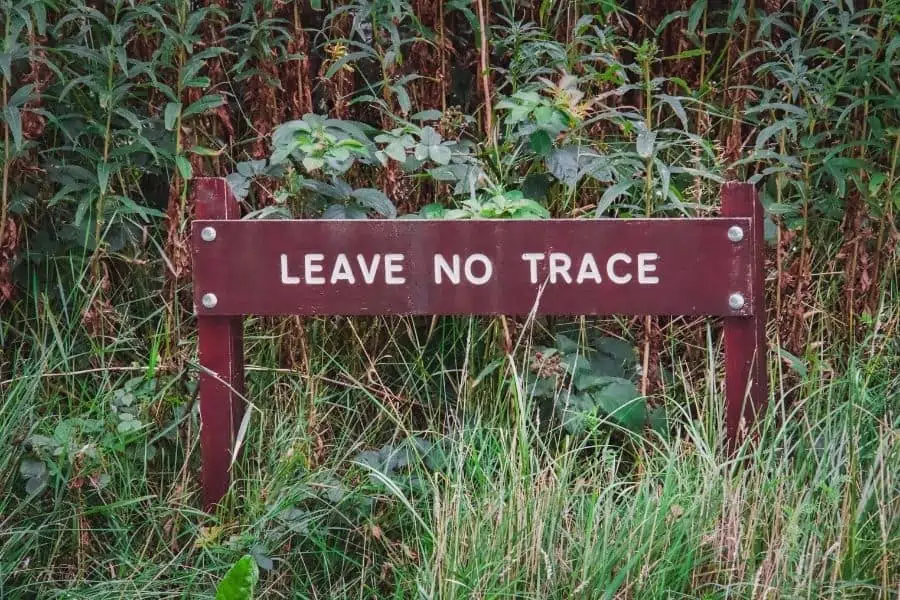
Have a plan in place when it comes to bathroom breaks.
To be in compliance with Leave No Trace principles, you’ve got a couple of options.
You can either bury your waste, in which case you’ll need to pack a trowel to dig a hole before you go, and ziploc bags for used toilet paper.
Or, you can pack your waste, in which case all you need is the bags, and an airtight container to store them in, so things don’t get stinky.
Personally, I couldn’t imagine having to carry that around all day, so I always go for option #1.
#15 If you’re taking your dog, keep all their stuff in one place
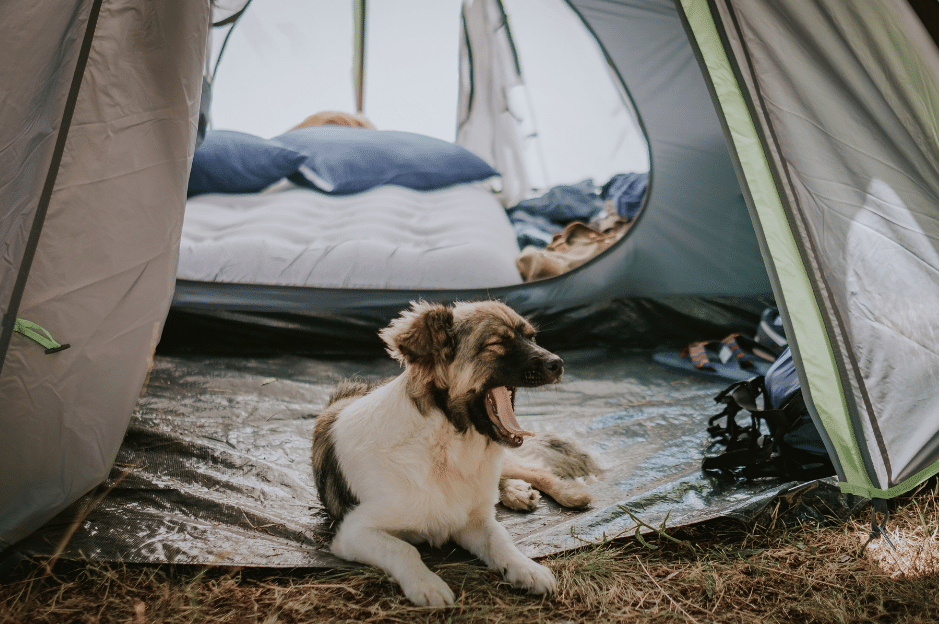
Dog food, bowls, a leash and anything else your furry friend needs should all stay together. That way, anytime your dog needs anything, you know where to find it.
If you haven’t already got a dog collar that lights up, I strongly recommend getting one.
My dog is black, so I wouldn’t have a clue where he was half the time at the campsite if he didn’t have a fluorescent green collar lit up around his neck.
Even if your dog doesn’t have a tendency to wander off, it still gives you peace of mind knowing you can locate them easily in the dark.
Camping Gear Storage Tips For When You Get Back Home
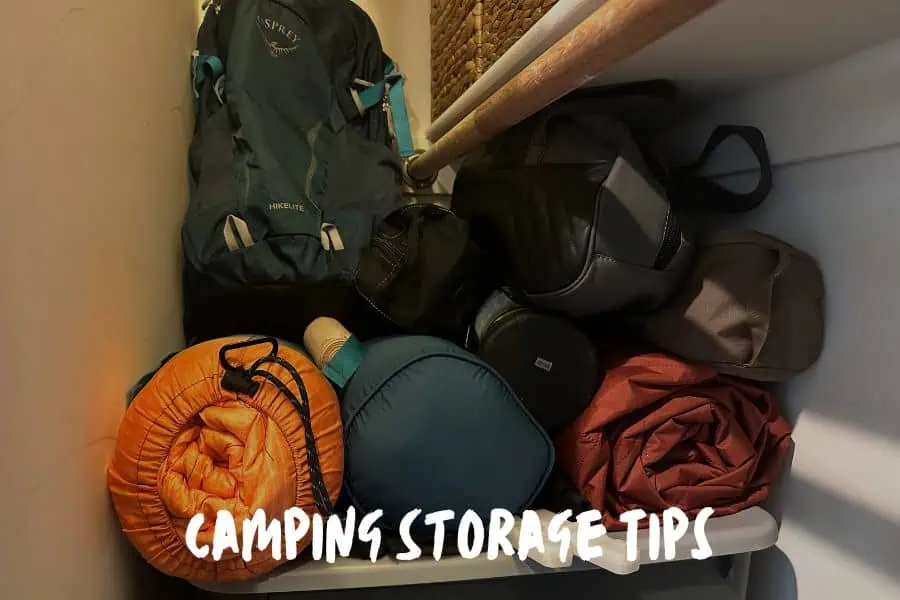
So you’ve arrived back home. What now?
What’s the best way to store your camping gear? How can you give yourself a head start for your next expedition?
Here are a few tips to help you out.
#16 Keep your gear stored in a cool, dry place
In order to make sure your gear lasts for as long as possible and doesn’t get damaged in between camping trips, make sure you keep it in a cool, dry storage area.
Direct UV sunlight can cause irreparable damage to a lot of camping gear over time, so make sure your gear isn’t left out in the sun.
#17 Keep things in labeled containers
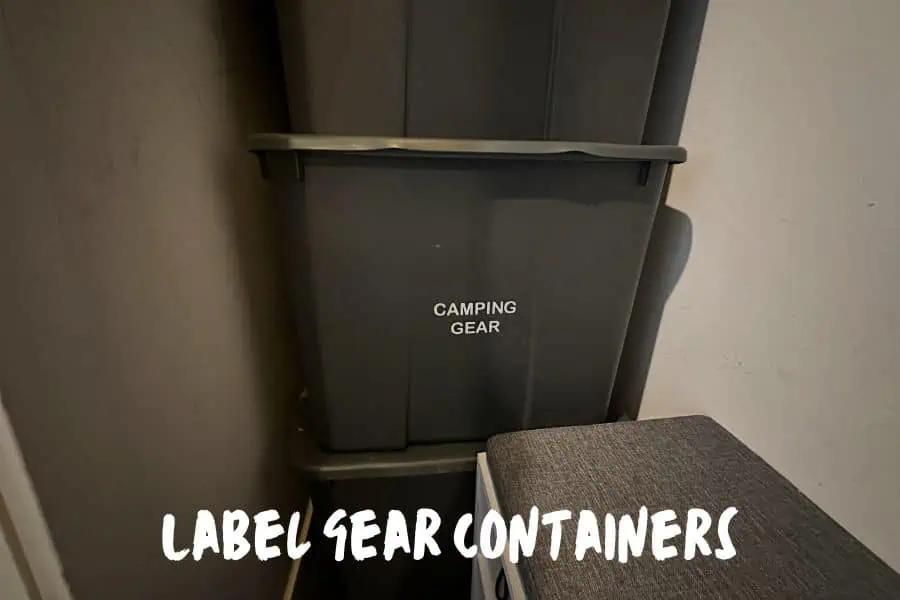
One thing you can do to make things easier next time is keep your camping equipment categorized and stored in labelled containers.
This is one step up from color coding, because you can write down the specific contents of each container, in case you forget what you packed where.
This will make packing for your next trip a whole lot easier, as you won’t have to rummage through boxes and bags trying to figure out where everything is.
#18 Air out sleeping bags and blankets
Make sure you don’t forget to hang all your sleeping bags and bedding up to air when you get home.
Sleeping bags should then be loosely folded and packed away. Don’t keep your sleeping bag rolled up in its stuff sack for long periods of time, as it causes the insulation to lose its efficiency.
Wrapping Things Up
With all these camping storage ideas under your belt, it should be much easier to stay organized on your next camping adventure.
Remember, it’s all about the pre-trip prep!
Take the time to plan properly and you shouldn’t have any trouble keeping your campsite tidy and in order.
That means less stress and more time to relax and enjoy your vacation. Definitely worth it!


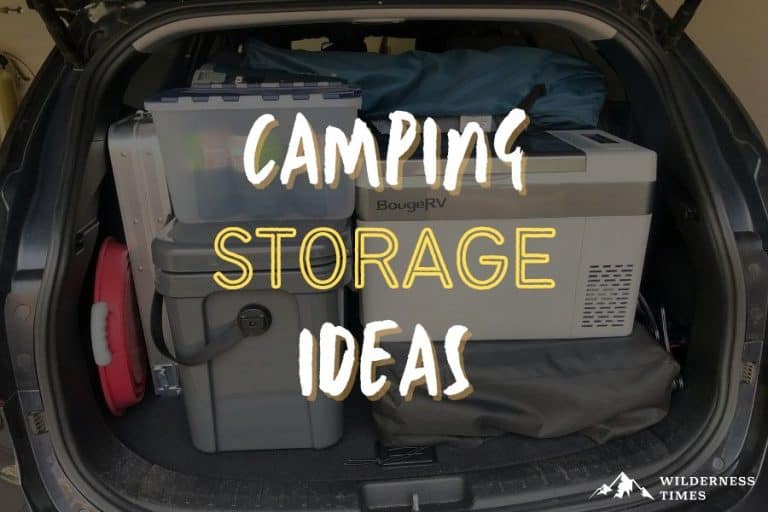
3 thoughts on “Camping Storage Ideas (18 Tips to Get Organized In No Time)”
Oh good lord, enough with the word “hack”. Just say “idea”.
It’s just a “sexier” word. But totally get it.
Love these tips! I always struggle with keeping everything organized during camping trips, especially when I’m with the whole family.